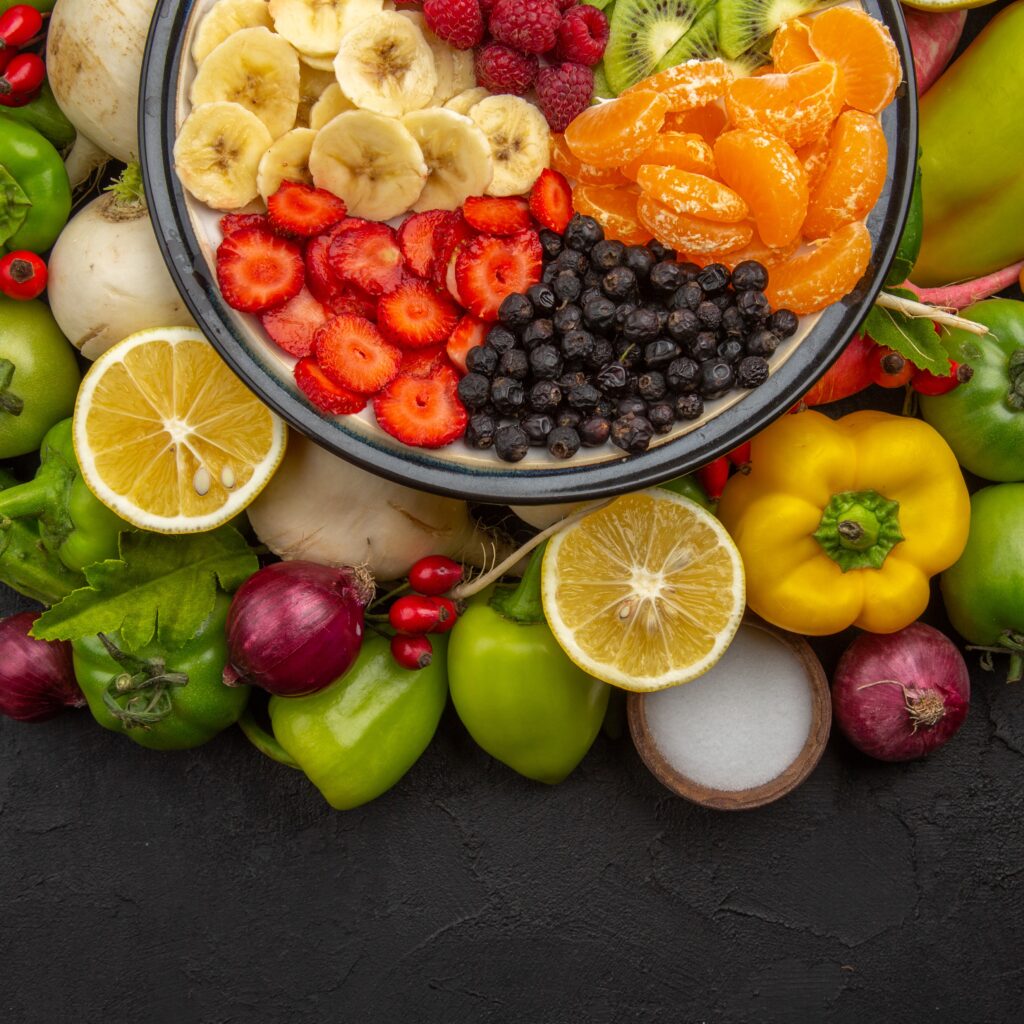
Eat the Rainbow: How Antioxidants Protect Your Health
Discover how antioxidants defend your body from oxidative stress and why eating colorful foods—not supplements—is the key to lasting health.
As a dietitian, I often tell my patients to “eat the rainbow.” This simple phrase encourages eating a variety of colorful foods, each offering unique nutrients and antioxidant properties. While “antioxidant” isn’t a specific nutrient, it describes a chemical property that helps protect the body from damage caused by unstable molecules called free radicals.
What Are Free Radicals?
Free radicals are unstable molecules formed during normal metabolic processes such as immune responses and exercise, or from external factors like smoking, radiation, and pollution. These molecules “steal” electrons from other compounds, damaging cells in the process. When free radical levels become too high, they can harm the body and contribute to chronic diseases such as cancer, heart disease, neurodegenerative disorders, autoimmune diseases, and diabetes.
How Antioxidants Work
Our bodies naturally produce antioxidants—known as endogenous antioxidants—including glutathione, alpha-lipoic acid, and coenzyme Q10, as well as antioxidant enzymes like superoxide dismutase, catalase, and glutathione peroxidase.
We also rely on dietary (exogenous) antioxidants to counteract oxidative stress caused by external factors. These include vitamins, minerals, and phytochemicals (plant compounds) such as:
-
Phenolic acid: found in coffee
-
Polyphenols: found in green tea and red wine
-
Lycopene: found in tomatoes
-
Lutein: found in kale
-
Flavanols: found in cocoa
-
Anthocyanins: found in blueberries
-
Quercetin: found in apples and onions
-
Catechins: found in green tea
What the Research Says
According to research published in Cell Death Discovery Journal (January 2025, PMC11760946):
“The therapeutic potential of antioxidants extends to various health conditions. In cardiovascular diseases, antioxidants can help reduce oxidative stress and improve endothelial function, potentially preventing atherosclerosis and other heart-related issues. In neurodegenerative diseases like Alzheimer’s and Parkinson’s, antioxidants may help protect neurons from oxidative damage and slow disease progression. Furthermore, antioxidants have shown promise in managing diabetes-related complications by reducing oxidative stress and improving glycemic control.”
Supplements vs. Real Food
Food marketing often promotes antioxidants as miracle compounds that can prevent heart disease, improve brain function, slow aging, and reduce cancer risk. While these claims stem from antioxidant research, most benefits have been observed in individuals who eat a wide variety of fruits and vegetables—not in those taking antioxidant supplements.
In fact, excessive use of antioxidant supplements may be harmful. A balanced, colorful diet remains the best way to support your body’s natural defense system.
Tips to Boost Antioxidant Intake
-
Fill half your plate with vegetables at each meal.
-
Choose a variety of colors—green, purple, red, orange, blue, yellow, or white—each provides different vitamins and antioxidants.
-
Include nuts and seeds as sources of heart-healthy fats and antioxidants. Some antioxidants are absorbed better when paired with fat.
-
Cook strategically:
-
Cooking tomatoes increases the availability of lycopene.
-
Cooking carrots and sweet potatoes releases beta-carotene.
-
Cooking asparagus increases ferulic acid availability.
-
Conclusion
Antioxidants play a crucial role in protecting the body from oxidative damage and supporting long-term health. Rather than relying on supplements, focus on building your plate with a wide array of colorful, nutrient-rich foods.
By eating the rainbow, you can nourish your body with the natural defenses it needs to thrive and lower your risk of chronic disease.